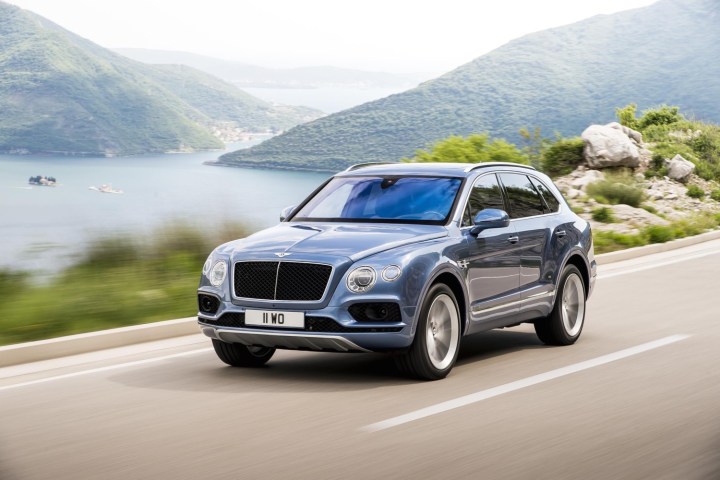
“I can assure you that Bentley — on the long-term view — will not stay with one model only in the SUV lineup,” confirmed company boss Wolfgang Duerheimer in an interview with industry trade journal Automotive News. “We have clear indications that a smaller Bentayga as a Bentley SUV would find great acceptance,” he added.
Bentley exclusively builds high-end luxury cars with corresponding price tags, and that’s not about to change. That strategy makes adding a second SUV a complicated proposition. On one hand, the company will dilute its image if it moves too far downmarket. On the other hand, the SUVs will overlap if the smaller model is positioned too close to the Bentayga (pictured) in terms of size, features, and price.
Rolf Frech, Bentley’s engineering boss, told Automotive News one way to differentiate the two SUVs would be to make the smaller one electric. Going gasoline-free would also take Bentley into a new segment, and lure a new set of buyers into showrooms. It’s a win-win situation for the British marque.
The catch is that Bentley’s resources are limited. It can’t afford to develop both a battery-electric SUV and the production version of the stunning EXP 10 Speed 6 concept shown two years ago at the Geneva Auto Show. Officials haven’t commented on which direction they’re leaning in. Last year, Frech told Digital Trends that he wasn’t in a rush to decide whether to move forward with the development of a more hardcore, driver-focused coupe like the EXP 10 Speed 6.
If it’s not electric, Bentley’s second SUV will most likely arrive with a powerful gasoline-burning six- or eight-cylinder engine, and at least one plug-in hybrid drivetrain. It’s not scheduled to arrive until 2020 at the earliest, so company executives have time to weigh the pros and cons of each option.
Editors' Recommendations
- How a big blue van from 1986 paved the way for self-driving cars
- Bentley’s first electric car could use cutting-edge solid-state batteries



